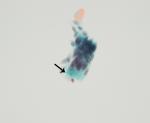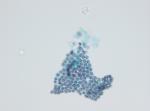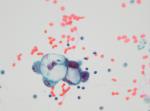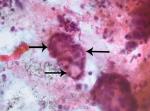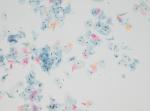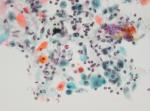Cytology

Assessing differentiation in epithelial cells
|
<<< Introduction to cytology |
The cytoplasm of the cell is useful in assessing differentiation. As malignant cells may be poorly differentiated, it may be more difficult to assess them and often a diagnosis of carcinoma can be made, but the type of carcinoma cannot always be determined based on a cytological sample alone. Immunocytochemistry may be helpful where the specimen contains enough material for testing.
Glandular cells are often columnar and may have cilia, some contain mucin vacuoles. Some are arranged in orderly sheets with a "honeycomb" appearance or in strips which may be pseudostratified or non-stratified. Glandular cells may form acini or variably sized 3D clusters with smooth borders.
Squamous cells usually have abundant cytoplasm which stains a dense blue-green on Pap or blue on Giemsa. When the cell is keratinised, the cytoplasm stains pink to orange on Pap.
|
<<< Introduction to cytology |


